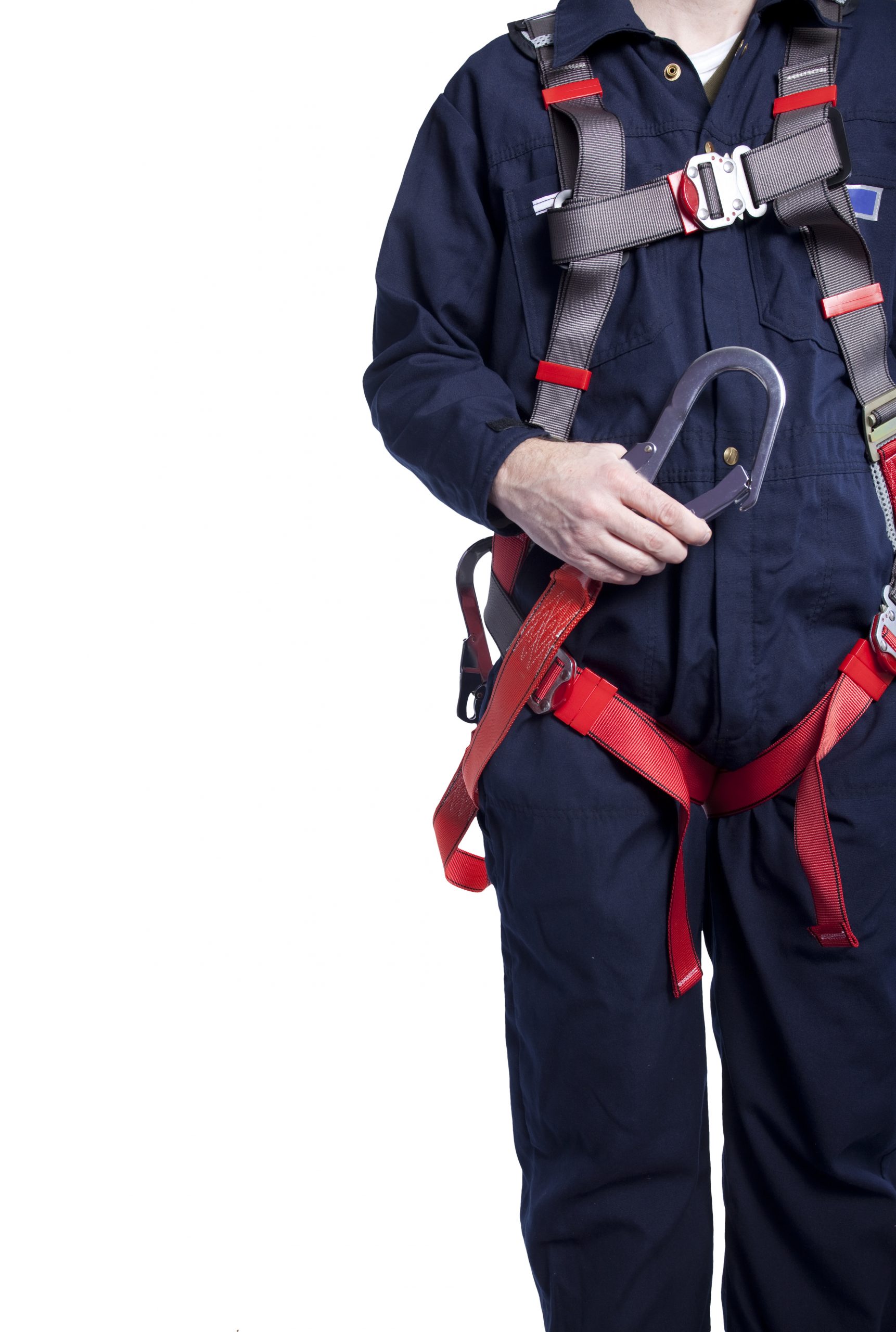Harnesses & Lanyards – Proper Selection, Training, And Use Ensures Your Fall Protection System Functions Correctly
As with any type of personal protective equipment (PPE), harnesses and lanyards should be considered as a last resort for protecting employees. With fall protection, it must first be determined if the fall hazard can be eliminated by removing the need to work at heights. If this is infeasible, what engineering controls can be put in place? For example, can you install guard rails, cover openings, block or restrict access to unprotected areas, use a scissors lift instead of a ladder, or install a personal fall restraint system that prevents employees from getting close to an edge from which they can fall? If none of these are feasible, or they are used and additional fall protection is required, then personal fall arrest systems, including harnesses and lanyards, must be used. But they must be worn and used correctly to ensure the safety of the employee.
Training And Daily Inspections Are Critical To The Effectiveness Of Your Harness and Lanyard
If it has been determined that employees need to wear a harness and lanyard, they must first be trained in how use and inspect this critical piece of personal safety equipment.
Prior to putting on any harness, it must be inspected. Not just the new employee, but also the employee who has been wearing the same harness and lanyard since the job started. Yes, this means all harness users must perform a daily inspection. If the harness was used while performing hot work or while working near tasks that generate sparks or heat, it may have been damaged. Look for signs of pitting, or even melting, that may compromise the strength of the harness.
What happened to that equipment since you removed it on the previous day or previous shift? Was the harness and lanyard stored properly to prevent damage, or was it thrown into a gang box with other equipment such as saws, drills, and spare blades that could cut the webbing? Check the nylon webbing on both the harness and lanyard for frayed edges, pulled stitches, cuts, or chemical damage. A harness or lanyard that has been damaged by chemicals or even ultraviolet rays from the sun may be discolored. Chemicals and sharp edges can also damage harnesses and lanyards to a point that they may not have sufficient strength to hold a worker in the event of a fall.
Next look at the buckles and snap hooks. Look for sharp edges or discoloration of the metal. Check to ensure the grommets in the belt are not loose or contain sharp edges. And by no means, do you ever punch a hole in the webbing to create an additional hole.
Remember only double locking snap hooks are allowed as a means to connect the lanyard to the harness and anchor point. Check to see that the latches on the hooks close completely and do not stick in the open position.
Also be sure to check the “D” ring. Make sure it is not bent or distorted, and there is no evidence of pits or chemical corrosion. Make sure the “D” saddle is not cracked or split, and it remains pliable.
Proper Fitting Of Harnesses And Lanyards
Once it has been determined that the equipment is in good condition, it is time to put on the harness. First of all, make sure the harness is the correct size. The manufacturer will provide guidance on the size of harness needed. This is normally determined by the weight and height of the user. When harnesses are purchased, remember that one size does not fit all! Harnesses should fit snug, but not tight. If the harness is too loose, the user may actually slip out of the harness, or the webbing could slide up the user’s body and create additional shock forces on the body in the event of a fall. If the harness is too tight, it could affect the user’s circulation, or will just be very uncomfortable, making it less likely that the harness will be worn. A good rule of thumb is that the user should only be able to get two fingers between the harness and his or her body.
The location of the “D” ring is also very important. After the user has properly tightened the leg and chest straps, the “D” ring should be located between the user’s shoulder blades. If it is not, it can be adjusted a small amount. However, it may also be that the harness is too big and the user needs to drop down a size. In some work applications the user must bend over quite often to perform the assigned task. This too can cause the “D” ring to slide down the back. Harnesses must be checked and adjusted throughout the day to ensure they are worn correctly. In the event a fall is arrested, it is critical that the user is in an upright position. Proper location of the “D” ring will help ensure this occurs.
Understanding The Limitations Of Your Harness and Lanyard
And finally, when determining if using a harness and lanyard is the correct option, fall distances must be calculated. Too often employees have not calculated for the expansion of the shock absorbing lanyard, the stretch of the harness, or the distance between the “D” ring and the anchor point, and count on a six-foot lanyard to keep them from striking a lower level. Once again, proper training must be provided to educate employees on the limitations of the personal protective equipment they have been provided.
If you need help selecting personal protective equipment like harnesses and lanyards, or need help implementing a training plan, contact Optimum Safety Management at 630-759-9908.








